#Resignification
Explore tagged Tumblr posts
Text
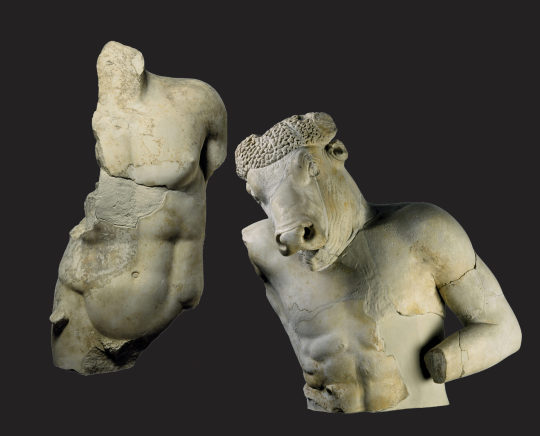
The House of Asterion - a short story by Jorge Luis Borges
This brief short story is a retelling of the ancient myth of the Minotaur. But it’s only gradually that some readers (like me) will understand that the narrator is no other than the Minotaur and his house no other than the famous labyrinth in Crete. Because what we encounter in this version is a lonely creature, not an evil monster. By placing the narrative in the perspective of the monster, Borges manages to portray it in a way that we can totally empathize with him, making his loneliness truly heartbreaking, desperate, almost self-destructive.
What a tragic fate to be so unique in the world, when that uniqueness is not celebrated but despised by everyone around. In a sense, we are all utterly unique and different from others. But then most of the things and creatures in this world can also find some other creature that looks more or less like them. There is plenty of similarity and vague repetition in the universe, which gives us a sense of order and the feeling of living in a cosmos. But monsters are one of a kind, an exception, an oddity. They are hybrids: they mix what we thought was rigidly separated in different classes, crossing boundaries, hindering easy categorization. Their bodies an aberrant assemblage of heterogeneous parts. Human and bull. Human, serpent and bird. Human, bird, dog and lion. Monsters mess with order and give us a taste of chaos, thus awakening some of our deepest fears.
The Minotaur’s house is as unique and monstrous as his body. He seems proud that there is no other labyrinth like his in the world. But, though unique, what the labyrinth contains within itself is endless repetition. Repetition of galleries, doors, corridors, courtyards… to the extent that any place in it is like whatever other place in it. What a paradox that such a unique creature should live in a house that constantly mirrors itself and celebrates repetition! And it's also a paradox that the creature who embodies chaos should live in a house that takes order to such an excess. However, when order and regularity are so exacerbated, couldn’t they also become their own form of chaos? One can feel how maddening it is for the Minotaur to spend his days alone in the maze. His existence is most of the time meaningless, without purpose. In some really moving passages, he describes how he runs through the galleries until he feels dizzy, how he lets himself fall from roofs until he is bloody, just to do something, just to make the hours pass. And he leaves the dead bodies of the young Athenians where they have fallen, without devouring them, as a way to introduce some difference in the identical spaces of his house. It is plausible to say that he wouldn’t even kill them if he didn’t feel compelled to do so as part of a kind of sacrificial ceremony, perhaps one of the only meaningful things in his life.
In this version, he is not a prisoner of the labyrinth. People and animals could get in if they wanted to and he knows the way out. In fact, he reached the streets and the sea once, but had to go back in because people were scared of him and he was scared of people, with their faces “discolored and flat as the palm of one’s hand”. (This last remark leads us to think that, when seen through a non-human perspective, we humans are also monsters, only that we grew used to our own monstrosity and can only see creatures with different bodies as such.) So the cause of his isolation is fear. The Minotaur is only trapped in his bodily difference, and unlike the uniqueness of his grandfather, Helios, the sun, the Minotaur's uniqueness cannot be revered as divine, but only feared and despised.
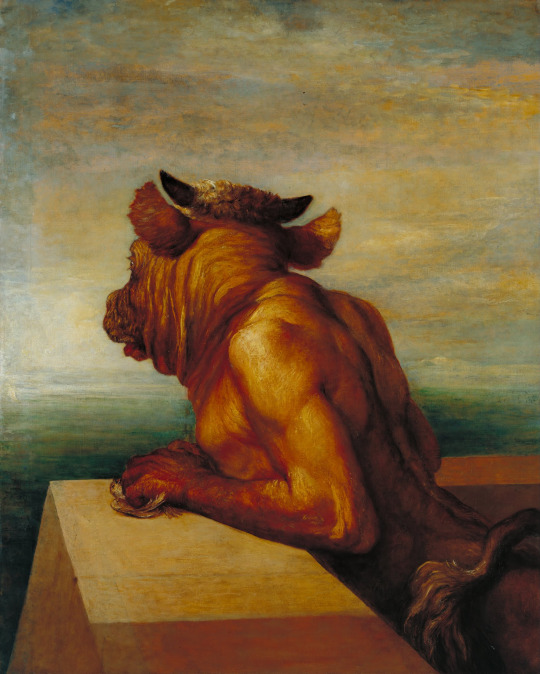
The Minotaur by George Frederick Watts, 1885. This is the painting that inspired Borges.
As a lonely creature, he had to come up with devices to make his long days and nights inside the labyrinth tolerable. In the absence of any real other, he relates to imaginary others and populates his solitude with ghosts. He has this little game in which he crouches around a corner and pretends he is being followed, just like little kids do when they hide so that someone comes and finds them with surprise. But no one comes to find the Minotaur while he is hidden. Other times he imagines that another Minotaur comes to visit, he shows him his house and they laugh together. In the end, the imaginary other adopts the form of his redeemer, his saviour, someone who will be born in the future and lead him out of his pain. Like most people, in the end the Minotaur resorts to hope and just waits.
Since then my loneliness does not pain me, because I know my redeemer lives and he will finally rise above the dust. If my ear could capture all the sounds of the world, I should hear his steps. I hope he will take me to a place with fewer galleries and fewer doors. What will my redeemer be like?, I ask myself. Will he be a bull or a man? Will he perhaps be a bull with the face of a man? Or will he be like me?
At this point of the story, many readers have surely identified who the narrator is and how the story ends, so Borges leaves a blank space for them to fill the last events by themselves. Also because the narrator is now dead. The only “redemption” the Minotaur could find was death in the hands of Theseus, the Greek hero. With their actions, heroes of all time are supposed to eradicate the existence of chaos in the world and restore the order that had been threatened. But we now know that the chaos the Minotaur embodied was not necessarily evil. Through the device of the first person, we got to know his innermost feelings and sad life. And so in this retelling of the myth the role of the hero is questioned. And so much more when we learn in the last lines that the Minotaur wasn’t killed through the bravery and strength of Theseus, but because the monster almost let himself be killed… out of sadness? In this context, the act of Theseus stands as an act of humanity’s cowardice and cruelty more than anything else.
Who have been the monsters and who have been the heroes all this time? This little short story leaves us with those questions.
But there is something more. There is something about the link between loneliness and labyrinth that is very powerful. To reach other people, the Minotaur has to go through the passageways of the labyrinth, and for others to reach him, they also have to navigate its intricate galleries. Borges imagines a world in which self and other are separated but also connected by the perplexing space of a maze; its characters condemned to look for one another through its complex architecture, always with the risk of getting lost, always with the risk of remaining alone and trapped in themselves.
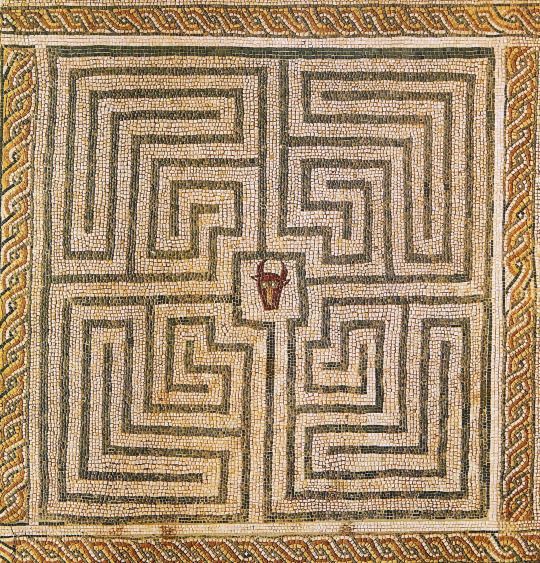
The Labyrinth
Zeus could never untangle the nets of stone that surround me. I have forgotten the men I once was; I follow the hateful path of monotonous walls which is my destiny. Straight galleries which curve in secret circles as the years wear on. Parapets cracked by the usury of so many days. In the pale dust I have deciphered tracks that I fear. The air has brought to me in the concave afternoons a braying or the echo of a braying, desolate voice. I know that in the shadow lurks the Other, whose lot is to fatigue the long solitudes that weave and unweave this Hades and to unnerve my blood and devour my death. We two look for each other. I wish that this were the last day of the waiting.
—Jorge Luis Borges (translated by David Bowles, October 2003)
#Borges#order and chaos#labyrinth#The House of Asterion#myth of the Minotaur#short story#resignification
11 notes
·
View notes
Text
fandom help
guys. im trying to get into an education doctorate program and i want to research how us non english native speakers write and read fanficiton speacilly us on lgbtqia+ community fandom would y'all non native english speakers want to participate? doesnt matter what fandom.
thank you so much in advance
Edit: the objective is decribed as: to investigate how participation in online fandoms, especially on Tumblr, and the production of fan fiction in English as an additional language impact the linguistic development, empathy and cultural awareness of English as an L2 speakers, with an emphasis on representations and the construction of LGBTQIAPN+, non-white, neurodivergent and disabled identities. The research seeks to explore how these discursive practices in digital spaces contribute to cultural resignification and the creation of new forms of belonging, promoting decoloniality and resistance to hegemonic norms.
27 notes
·
View notes
Text
Oooh world-historical consciousness imbues what was previously mundane with undercurrents of new ominous meaning and I don't like feeling myself being interpellated into this broader process of social resignification. World's longest and most obnoxious way of saying "freelance clients always inquire about my citizenship status for contract reasons but circa January 2025 the question scared me in a way it had not before"
16 notes
·
View notes
Text
I'm making a new post for this because I'm too anxious to add onto someone else's post, especially if I'm disagreeing with them-
(Also I'm mostly writing this because I wanted to make sense of my own thoughts, I'm not really in the mood to argue.)
But I saw someone say Zuko's ending as Fire Lord was confusing because he got what he wanted from the beginning, as in, he always wanted to become Fire Lord and then that is exactly what he became.
Sorry for stepping in like this, but-
Zuko didn't get what he wanted from the beginning.
At the start, "wanting his throne" was just a part of what he truly really wanted: the approval of Ozai, his love, to carry on the legacy of Ozai and Azulon and Sozin, to become better than Azula, to do and be what he was expected to.
He doesn't get any of that, at all.
He becomes Fire Lord but before that he has to let go of his desperate desire "to be great" (in the Fire Nation standard) and become a complete, irredeemable, utter failure in the eyes of the people he wanted to impress: he lets go of Ozai's approval, he understands Ozai will never love him, he renounces the legacy of the war, and he solidifies his position as Azula's inferior (in the eyes of the fire nation ideals ofc). He also upturns his old concept of what he was expected to be: an obedient prince following the status quo, carrying on the will of his rulers and ancestors VS a prince who loves his nation so much he decides to formally betray it.
He is shaken, at the end, when he is told by Iroh he will get the throne because it doesn't fit with his worldview anymore, and because he is ashamed. He becomes the Fire Lord but there is a complete resignification of what that entails and why that is important. Right now being the Fire Lord is not the natural progression of being Ozai's son, now he is signing up to shoulder the responsibility of changing the world.
His journey also shows us that he was right: the correct thing to do is speak out against injustice and cruelty. He was punished for it, they tried to suppress his drive to do better by his people, and he has to go a long way until he can shake off the severe attempt to make him shut up and conform. In his journey he also learns he can't do right by his people while still allowing them to oppress others, that he can't dehumanize anyone not just his fellow people.
...so yeah. I really don't think he got what he wanted in the end. If he had, he would have been shrouded in the glory of destroying the fire nation's enemies, he would have been a worthy son of his forefathers' cruelty-...and he did get that for a while, didn't he? And didn't he get the whole "be careful what you wish for" experience? If his arc had ended there and he hadn't gone away to train Aang, then we could say he was handed exactly what he always wanted to have and that there was no change.
But no. His father hates him. He let go of a 100 year old legacy. He disrupted the "glorious" expansion of a "glorious" nation. To many, he is a disappointment and embarrassment because he did the unthinkable: he retreated, he sent the armies home.
He surrendered against all Fire Nation beliefs of honor because he finally understood he can't gain honor by hurting others.
He let go of the definition of honor that was corrupting him.
That is change.
There is nothing wrong, anyway, in a character getting exactly what they wanted if along the way the motivations and significance of the goal change.
(Being truly honorable can be super humiliating tbh
He let go of his cultural view of status and that h u r t s
I'm Latin American born and raised, I have experience with this one- and it still has me on a chokehold. He is a fictional character and yet I look at him and I'm like wow that thing right there? Takes balls. I still can't let go of the expectations that are suffocating me even though I know they hurt me more than help me.)
56 notes
·
View notes
Text
“Within lesbian contexts, the "identifcation" with masculinity that appears as butch identity is not a simple assimilation of lesbianism back into the terms of heterosexuality. As one lesbian femme explained, she likes her boys to be girls, meaning that "being a girl" contextualizes and resignifies "masculinity" in a butch identity. As a result, that masculinity, if that it can be called, is always brought into relief against a culturally intelligible "female body." It is precisely this dissonant juxtaposition and the sexual tension that its transgression generates that constitute the object of desire. In other words, the object [and clearly, there is not just one] of lesbian-femme desire is neither some decontextualized female body nor a discrete yet superimposed masculine identity, but the destabilization of both terms as they come into erotic interplay. […] Clearly, this way of thinking about gendered exchanges of desire admits of much greater complexity, for the play of masculine and feminine, as well as the inversion of ground to qure can constitute a highly complex and structure production of desire. Significantly, both the sexed body as "ground" and the butch or femme identity as "figure" can shift, invert, and create erotic havoc of various sorts. Neither can lay claim to "the real," although either can qualify as an object of belief, depending on the dynamic of the sexual exchange. The idea that butch and femme are in some sense "replicas" or "copies" of heterosexual exchange underestimates the erotic significance of these identities as internally dissonant and complex in their resignification of the hegemonic categories by which they are enabled. Lesbian femmes may recall the heterosexual scene, as it were, but also displace it at the same time. In both butch and femme identities, the very notion of an original or natural identity is put into question; indeed, it is precisely that question as it is embodied in these identities that becomes one source of their erotic significance.”
Gender Trouble, Judith Butler, 1990
11 notes
·
View notes
Text
In “Essay on the Awkward / Black / Object,” which appears in Sympathetic Little Monster (2018), Awkward-Rich meditates on the racialization of “awkward,” which is both the speaker’s father’s last name and, for the speaker, a mode of Black being. While awkwardness is not a diagnostic category, its adjectival form allegorizes disability, in much the same way that my peers heralded my neurodivergence by calling me Awkward John. As a racialized term, “awkward” reveals the contingence and tension between race and disability: at once overlapping and yet cleaved apart. Reflecting on the history of slavery through which many African Americans received their last names, Awkward-Rich writes, “You already know the story. A man is made into a thing & sutured to it. The name” (18). The name “Awkward” recalls a violent, familial history but also gestures toward an escape from it, a flight from its inheritance: “Awkward as both punishment & method” (23). As method, awkwardness is a form of negativity and refusal. It is, at once, a recognition of the status of Blackness in an antiblack world—“As long as the object works it is bound to its own annihilation” (21)—and a resignification of that status. “The solution?” the poem’s speaker tells us plainly, “Fall. Fall apart. Decay” (21). To fall apart and decay is to allow the wash of negativity to soak you through. It’s to breathe with the chill of your skin as the negativity dries. To adopt such affective stillness, to be held fast in the iciness of bad crip feelings, is to embrace the power of refusal. This isn’t the reclaimed power of the category of disability, a power bestowed by legibility. This isn’t really empowerment at all. This power is sourced internally by refusing Reason. It’s to refuse the expectation of endurance. It’s to refuse your own instrumentalization—as disabled, as racialized, as queer. Not because you aren’t those things but because you aren’t those things in the way they want you to be. They as family, as employer, as school, as government, as society, as capitalism, as ableism, as white supremacy, as cisheterosexism. To fall. Fall apart. Decay. These things we can do. We do them so very well. So well, in fact, we might call them symptomatic of a debility drive: not ushered into death or disability—contra Edelman and Mollow—but receding back into debility, into fungibility, into the obscurity of invisibility that comes with refusing categorical adherence. This is not a romanticization of abjection nor a negligent omission of people who never had access to the category of disability to begin with; rather, it is a condition of abolition for us all.
J. Logan Smilges, Crip Negativity.
[emphasis added]
46 notes
·
View notes
Text
August 2- National Science and Technology Museum, Din Tai Fung and mall, Meinong Hakka Folk Village and Cultural Museum
Today we went to the National Science and Technology Museum first, it was pretty interesting though it seemed more for a younger audience. I went straight to the space section because I love learning about space pursuits. Afterwards, we got treated to Din Tai Fung which was so delicious, my favorite being the chocolate Xiaolong bao. We also got to walk around and I bought some things at Uniqlo (probably too much). We ended our day by driving an hour to the Meinong Hakka Folk Village and Cultural Museum. I enjoyed seeing the museum and another active group in Taiwanese culture.


Academic:
In our article today the author begins by recounting an unplanned encounter with the Taipei Hakka Street Festival. The festival's location in the largest Hakka neighborhood in Taipei and the subsequent visits to the Hakka Arts and Culture Center revealed a deliberate effort by Hakka culture workers to preserve and promote Hakka identity within the urban context of Taipei. Despite the apparent governmental involvement in these cultural projects, it serves as mechanisms for attracting attention to Hakka language and cultural preservation. The Yimin Ye parade further illustrates the appropriation and resignification of urban space. Yimin Ye, a deity commemorated for his role in historical uprisings, becomes a symbol around which Hakka identity is organized and performed annually. The parade’s route through the Tong-hua Street neighborhood to the commercial and government districts of Taipei signifies a temporary but powerful transformation of these spaces. The loud, vibrant procession with firecrackers and offerings disrupts the usual urban order, creating a distinctively Hakka presence in the heart of Taipei. This practice of holding the parade in a district associated with Taiwan’s position in global capitalism and consumer culture subverts the intended symbolic properties of the area. By temporarily reconfiguring the space, Hakka culture workers challenge the neoliberal urban planning that seeks to regulate and direct urban subjects towards specific political and economic aims. This act of “creating and representing public space” as Hakka space resists the marginalization often associated with multicultural nationalism, which tends to compartmentalize ethnic traditions while reinforcing a dominant national narrative.
The multicultural nationalism in Taiwan, which has shifted towards inclusivity, still grapples with the balance between celebrating diversity and maintaining a coherent national identity. The physical and symbolic transformation of urban spaces during these events highlights the dynamic and contested nature of identity politics in Taipei. The case study underscores the importance of space in the production of collective identities and the ways in which urban environments can serve as sites of both social control and resistance. The Hakka culture workers’ efforts to create a Hakka heterotopia in Taipei challenge the homogenizing tendencies of state-sponsored multiculturalism and global capitalism.

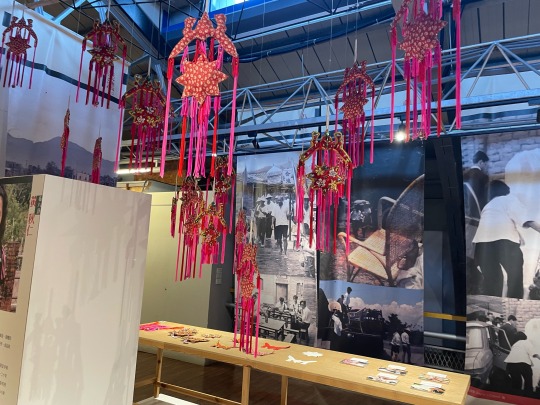

2 notes
·
View notes
Text
If there is something right in Beauvoir’s claim that one is not born, but rather becomes a woman, it follows that woman itself is a term in process, a becoming, a constructing that cannot rightfully be said to originate or to end. As an ongoing discursive practice, it is open to intervention and resignification. Even when gender seems to congeal into the most reified forms, the “congealing” is itself an insistent and insidious practice, sustained and regulated by various social means. It is, for Beauvoir, never possible finally to become a woman, as if there were a telos that governs the process of acculturation and construction. Gender is the repeated stylization of the body, a set of repeated acts within a highly rigid regulatory frame that congeal over time to produce the appearance of substance, of a natural sort of being.
from Gender Trouble by Judith Butler, “Subjects of Sex/Gender/Desire”
5 notes
·
View notes
Text
So like--- read Gender Troubles
but i know ur not gonna do that, so heres the short of it: gender is not like--- real. it is a category of persons, who have relatively disperate traits. Not all 'cis women' have the traits we would generally consider 'woman' (from chromosomes through to actually having a uterus, through to all sorts of other intersex schtuff, along with yknow all the various social traits)
So butler argues that gender isnt really something you are, its more something you do. Saying "i am a woman" is alot like saying "i promise" youre *doing* something alongside saying something.
Of course gender doesnt exist in a background and what we considered "regular people with genders" could more aptly be considered "gendered subjects" and without a society to subjectify them there would be no gendered subjects. Which is why trans people oft prefer society to not suck ass.
TL;DR: gender doesnt exist without a society, the only reason we dont call "femboy" or "worker" a gender is because those arent things we considered worthy of the gender status. So to say "science" says anything about gender is a little bit dishonest. You can change genders because you can change how society views your traits (this is called resignification btw).
Because you can change your gender, and the only reason a person would ever do that is to make their lives better (including children, children are people too) there is no reason not to indulge the change, because WORST CASE SCENARIO they change back, and look at the past with saddened eyes.
But you know what happens if you dont, and they dont change back (abt 99% of cases of transes dont detrans) YOU FUCK UP THEIR CHILDHOOD. I would know. Some of them even kill themselves. If Pink Floyd never recorded I'd prolly be among them ngl.
So as informal as this is, your take is dogshit, learn about Postmodernism, get good, go home, and im not looking for a reply.
Love, Lilly <3
P.S alcohol and cigarretes are addictive and fuck up brain development, being called a name that doesnt make you want to kill yourself is neither of those things, hope that helps :P





59K notes
·
View notes
Text
Information, Communication, Systems Cybernetic Aesthetics in 1960s Cultures CRISTINA IULI
such a shift [60's] entailed the decline of epistemologies based on the distinction between a subject of knowledge and an object to be known, and the parallel emergence of one based on the systemic relation between elements, information, function and communication......
This new epistemology replaced a view of nature and society as “given” facts or entities existing in the world independently from our knowledge of them, with one in which both nature and society are inseparable from our ways of knowing and describing them
Such a revision generated a shift in the concept of art and in the notion of the artwork from object to process, from static to performative, and from closed to open system.
As a consequence, signification, reading practices, and textual interpretation were reconceived as a circular model of communication, where notions of information, medium, and user replaced notions of sender and receiver presupposed by linear, non-specialized theories of communication. These ideas, germinated within the cybernetic paradigm, had a crucial impact on the emergence of the notion of the “death of the author” and the “literature machine” formalized by structuralist poetics in the 1960s
The cybernetic worldview promoted a systemic notion of meaning based on the ongoing interactions of human and nonhuman elements functionally connected in a communication circuit
Wiener’s formulation of a message as “a discrete or continuous sequence of measurable events distributed in time.” 17
cybernetics as the science of control and communication “in the animal and the machine.
the fantasy of a possible re-unification of all knowledge as controlled flux of information across disciplinary domains, from information systems to biological systems to cultural systems, leaving no material leftovers.
from object to process
Poetry here softens the rigidity of the mathematical formulation by redistributing its terms across the poetic lines, subjecting each element of the citation to new syntactical and semantic pressure. This act of suspension, de-signification and resignification generates ambiguities and irregularities within the poetic form, injecting instability in the hermeneutic process. The explicitly evoked cybernetic circuit is disrupted by means of ironic suspensions and inversions, which force the process of signification beyond the formal boundaries of the poem.
He [Calvino] investigated the potentialities of nonlinguistic codes (mathematical and biological codes, mainly) and nonanthropomorphic relations and concepts (such as distance; time; geometry) as propellers of the imagination and generators of semantic, rhetorical and figural disturbances that creatively disrupt the automatisms of myth and storytelling.
Calvino’s claims about literature as the privileged manifestation of the coupling of communication and consciousness, and of reading as “a way of exercising the potentialities contained in the system of signs belonging to all societies at all times.
Marshall McLuhan offered a view of the media as an extension of human consciousness beyond the physiological limits of the body, conceptualizing them as an electric extension of the central nervous system
it also emphasized the immanent, systemic, and technological substratum of human mental processes and linguistic practices, thus downplaying the explanatory force of anthropocentric theories of consciousness and subjectivity
0 notes
Text

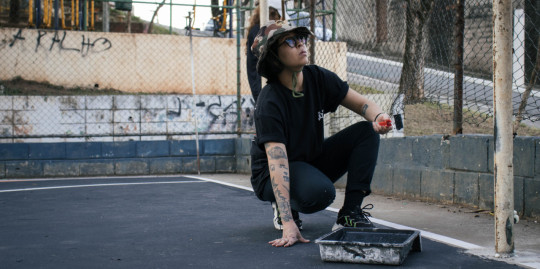
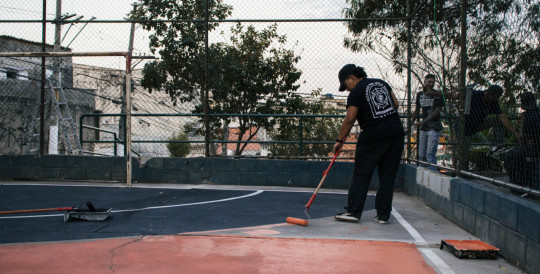
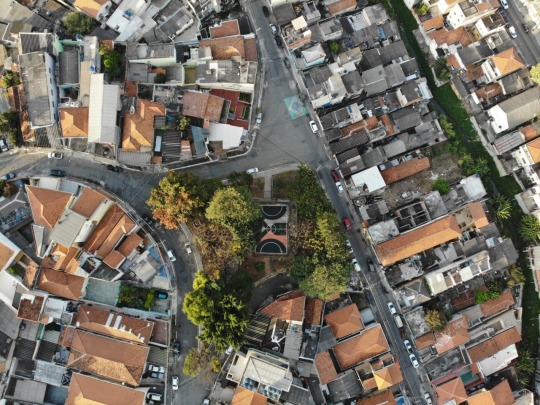
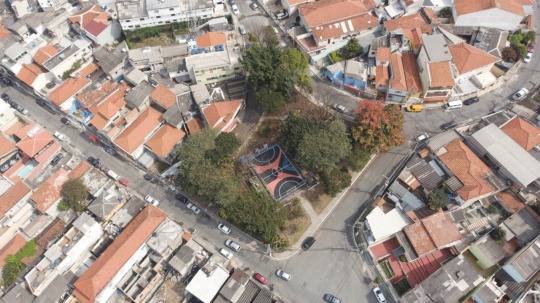

Mural Art -- “Intervenções Urbanas por Mulungú Cultural” Painting and revitalization of a public sports court. Praça da Fortuna, Vila Gustavo August 2023 São Paulo - Brazil --
youtube
--
Urban Interventions is one of the areas of action of the Mulungú Cultural collective, which aims to encourage the population to debate and reflect upon occupying and interacting in different ways with public space.
In this intervention, visual arts were used as the main language through the work of artist Camila Moritugui. The construction of the work had as its concept the reflections that surround the occupation of public space, such as the feeling of belonging and resignification of the environment.
Through the intervention, together with local residents at all times, it was possible to create new functions for the court which, now, in addition to its initial sporting function, has an artistic character and other possibilities for use as events and meetings by the general population. .
–
Credits: Executive production: Ukindi Produções General coordination and creative production: Dara Roberto Visual artist: Camila Moritugui Capture and photography: Victor Brum / Alexandre Ramalho Realization: Mulungú Cultural
#moritugui#geometric abstract#modern abstract art#hard edge#abstracart#art#mural art#court painting#Youtube
0 notes
Text
Rafael Albuquerque comments on working on Teenage Mutant Ninja Turtles
"Working in this project is fulfilling a desire of the 10 years old Rafa, who has always waited anxiously for the TMNT cartoon episode every morning before school. I have always loved the Turtles, not just because I finally saw a character with my name, but also because back in the '80s it was great seeing characters that had the same age as we did. Liked the same things and still were badass enough to not be just a sidekick here or there," Rafael Albuquerque told ComicBook via email.
"30 years later there is a huge reason for me to want to be part of it as well, not only nostalgia. JASON AARON. Jason has been one of my favorite writers for years. I love Scalped and in all these more than 10 years knowing each other we never really had many opportunities to collaborate.
He has always been able to visit things and add such an acid, profound and creative vision towards everything he does, that the idea of witnessing him resignificate the TMNT is a once in life opportunity.
Working on this Michelangelo story was a blast, and I hope people enjoy it as much as I did!"
1 note
·
View note
Text
it's called resignification. if i see someone wearing a cross, i don't automatically assume they're christian, or even western, because I know that's just not the case and it has nothing to do with me. for example, a lot of south koreans also marry in unconsecrated chapels.
likewise, inverted crosses are not necessarily a religious symbol, because not all satanism is religious. some satanists are simply philosophical satanists who are non-theistic and understand their worldview or values as containing certain polemics against christian ideas. that some christians may even share. others actually have a belief in a deity or several, those would be religious.
for some people crosses are cultural symbols or national symbols because of a historical connection to christianity that is no longer present in their worldview or community, or a family heirloom.
i venture to guess this is a bad use of 'weird' if the "trend" is older than you, like the gothic counterculture. anyway, as a christian, i think atheists can wear crosses without being christians and also atheists don't need christian permission to use cultural symbols bc clerical/religious authority is not what legitimizes counter-cultures that literally began as challenges to their cultural hegemony.
there is an on-going abuse of the concept of "cultural christianity" online where anything that's western and also not religious is called "culturally christian" as if christianity is the only source of culture in western civilization, which is fundamentally a theocratic idea and also false. the west exists besides and beyond christianity even if it is one of its historical pillars.
tl;dr don't assume, especially if you're an american only exposed to a fraction of the christian world AND of western civilization which stretches far and wide. the west has post-christian elements and freedom of religion and that's what diversity looks like in practice. seeking uniformity and religious conformity is a reactionary value, not some fresh polemic that will liberate minorities.
Can we stop treating crosses like they’re non-denomination? Yes, even if it’s emo or goth. It’s still a religious symbol. You are culturally christian. That’s not a bad thing, but when you treat your culture like it’s everyone’s culture it does make people uncomfortable. I’m pretty goth sometimes. I get really uncomfortable when I look up goth stuff on pinterest and it’s all crosses. You can wear them, but when you’re an atheist with a pin that saying “fuck religions” it’s pretty fucking weird that you’re wearing cross earrings.
2K notes
·
View notes
Link
0 notes
Note
people are afraid of transmasculinity because it requires, as Paul Preciado put it, "confronting a new species of technomale postsexual reproducer. And this is the beginning of new perspectives regarding struggles and pharmacopornographic resignifications." (Preciado himself struggles to define transmasculinity, because he sees "transsexuals" as inherently trans women, but he speaks of his own gender as "mutant dyke" & "addicted to testosterone")
he sounds based
32 notes
·
View notes
Text
Lesbo Pride Flag

A pride flag for reclaiming the word Lesbo. Often directed at sapphics and lesbians. [id.: 3 horizontal stripes of foggy pink, lavender indigo, and dark orange/orangy black. ends id.]
#resigning#resignifying#resignification#lesbo#pride flag#sapphic#lesbian#wlw#mogai#lgbt+#lgbtq+#mod ap#reclaimed#reclaiming#reclamation#reappropriation
82 notes
·
View notes